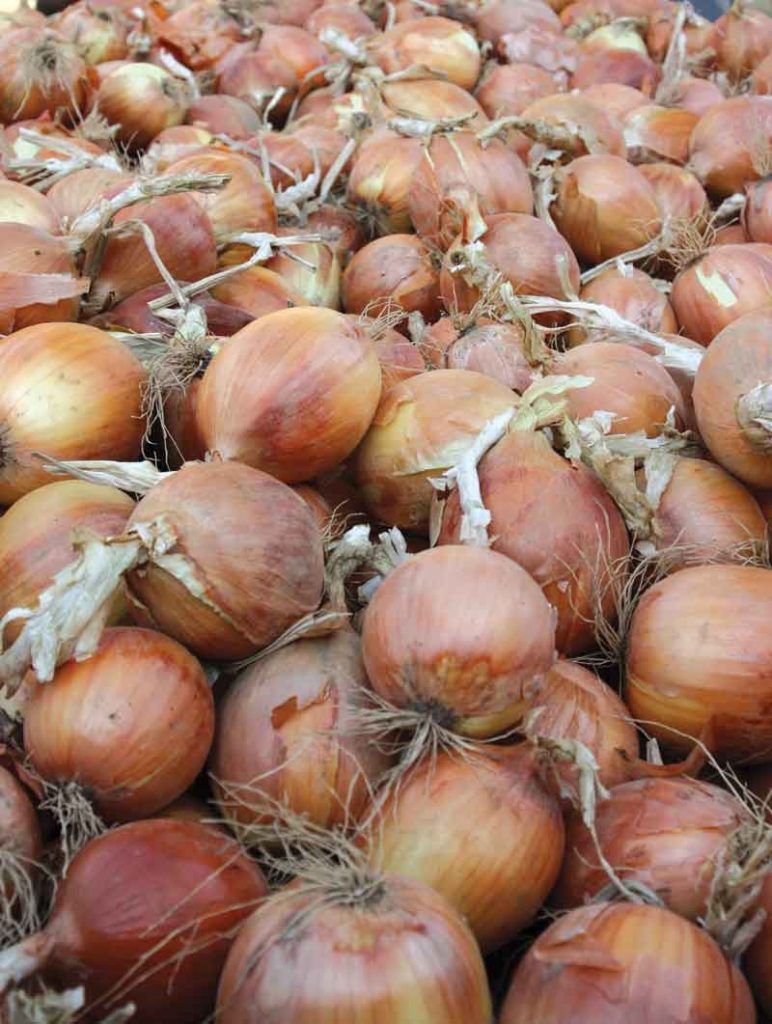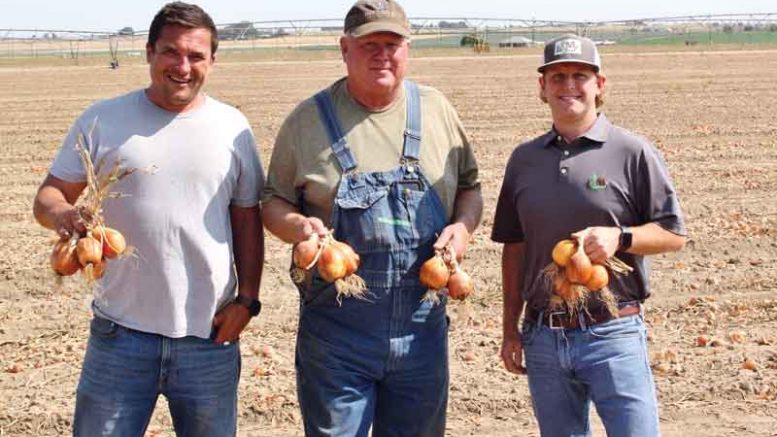Story and photos by Denise Keller, Editor
From breeding the variety in Japan to growing the crop in Washington state, it’s been a long road to get Goldies to market. But the new tearless onion variety has made its way to grocery store shelves in most every corner of the U.S. And the onion grower, marketer and distributor behind the venture are hoping Goldies will prove to be a golden opportunity.
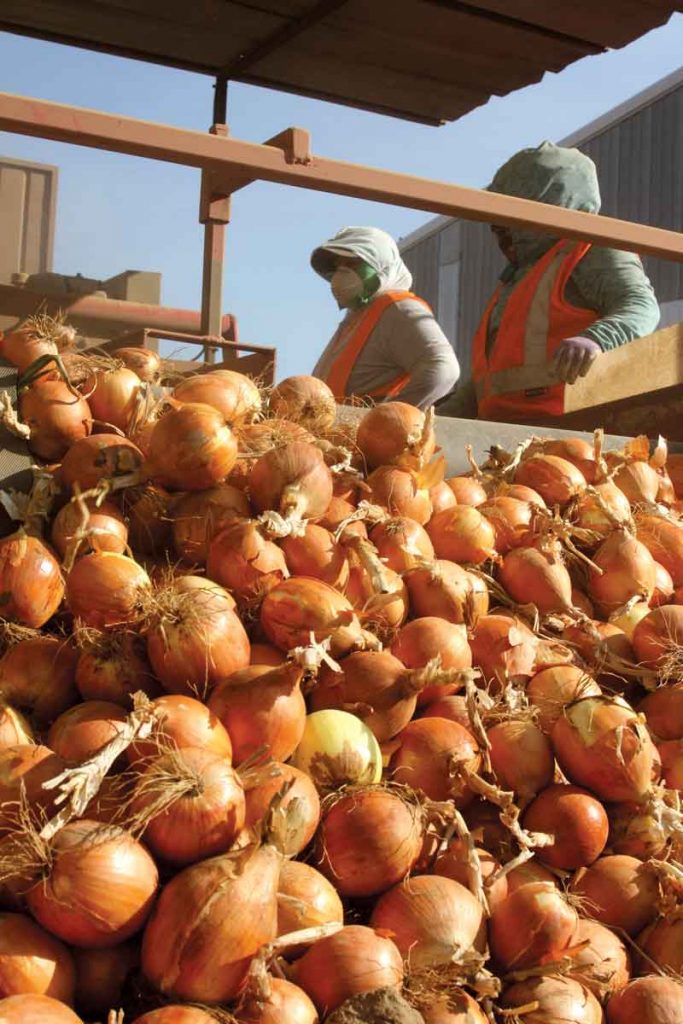
In Partnership
Goldies is a mild-flavored sweet onion grown to be free of the pyruvic acid that makes onions pungent. For consumers, this means no tears when cutting the onion and no onion breath after eating it. The variety does not require time in storage to lose its pungency, so it’s ready for market the day of harvest.
The variety originated in Japan, where House Foods Group began developing the genetics in 2005 and launched the onion under the name Smile Ball about three years ago.
It was rebranded as Goldies for the U.S. market. Here, Bejo Seeds is producing the proprietary seed for Flavorful Brands, a branded produce company that is overseeing marketing and promotion. Flavorful Brands has appointed L&M Companies as the exclusive sales agent.
“Given the success that we have and our footprint as an onion marketer and grower in the United States, Flavorful Brands thought we would be a good fit to bring this to market,” says Derek Ennis, sales director with L&M. “We have a lot of relationships with major retailers already.”
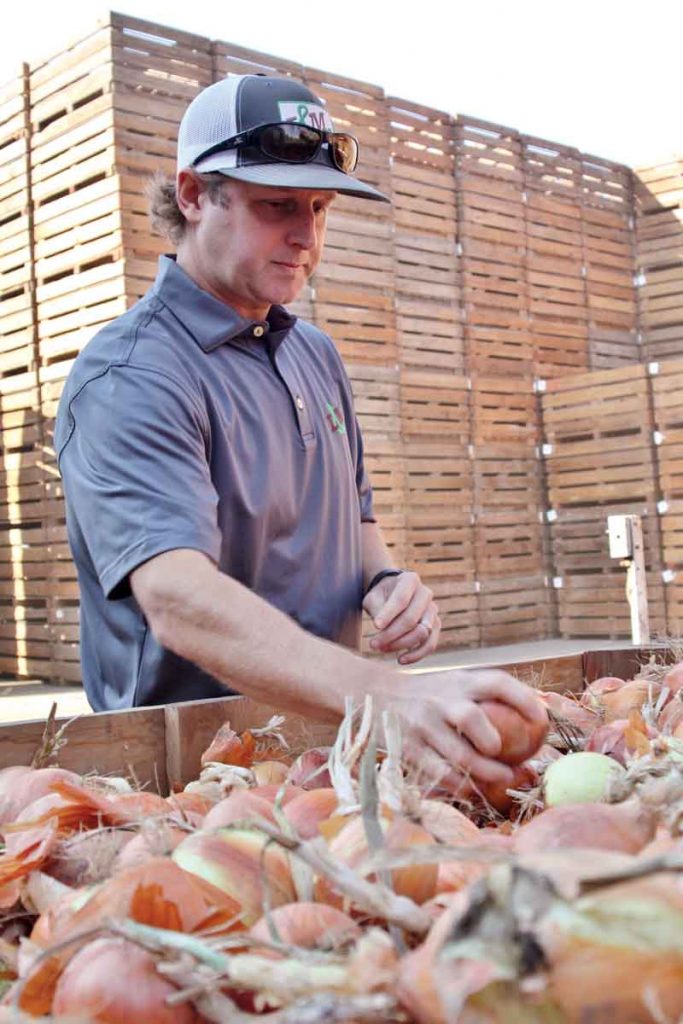
L&M also has a relationship with Andy Jensen of Jensen Farms in Warden, Washington, as the marketer of Jensen’s onions for the last four years. Believing that the growing region would be well suited for Goldies, Ennis approached Jensen about trialing the new variety.
“And I told him, ‘Let’s give it a try,’” Jensen recalls. “You raise enough acres of these other varieties that are pretty much the same that trying something new is always a challenge, and I like it.”
“Andy swears it’s the best onion he’s ever had raw,” Ennis adds. “He’s excited about it and thinks we have something that’s going to be really unique and market really well. It’s good when you have a grower that can get behind it and sees the value.”
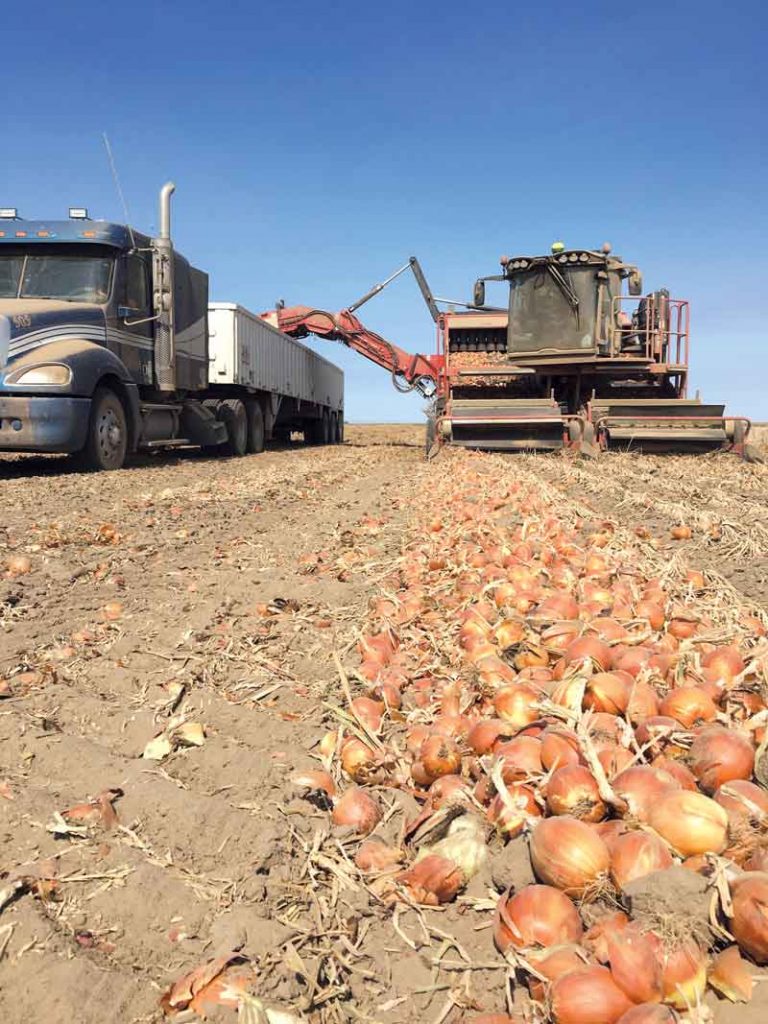
In the Field
The Jensen family has been farming since the early 1970s. Onions were added to the rotation in the mid ‘70s when the local sugar beet factory closed, forcing Jensen’s dad to take on a new crop. At that time, Jensen says, Washington state was producing about 1,700 acres of onions.
Today, Jensen Farms alone grows 1,700 acres of onions, with 75 percent of the acreage planted in yellow onions, 20 percent red and 5 percent white. On the remainder of the farm’s 6,000 acres, Jensen grows carrot seed, alfalfa seed, corn, wheat, barley and hay.
Last year, he grew a commercial test plot of Goldies. With a few lessons learned and greater market demand, but still in the trial phase, he grew six times as many acres this year.
“We approached the Goldies test like any other,” the grower said. “It’s not a big deal. If it flops, it flops. But if it can work and it fits my program, we just as well try it.”
On the plus side, Goldies seem to be a hardy variety, Jensen says, noting that the onions have escaped the downy mildew that has been an issue in the area the last few years. The crop also benefits from the farm’s good water supply, healthy soil, long days and dry weather – all of which generally help onions size up.
Goldies, however, tend to be on the smaller side, which contributes to an overall yield about half that of a typical onion cultivar. The variety’s lower yield and higher seed prices increase input costs, which have to be passed along, Ennis says.
To try to increase bulb size this year, Jensen “babied” the crop a little more and continues to fine tune seed population and fertilizer. He increased seed spacing by a half inch and increased liquid fertilizer applications. Bulbs were about 20 percent bigger than last year.
“I like trying new things. Doing the same thing all the time gets boring,” Jensen says. “This year will be the tester year. It’s a challenge to get the right dollar amount for what you need to make these work. It’s been a challenge to get started. You have to figure out where you can make money in the deal and make enough sales to make it work.”
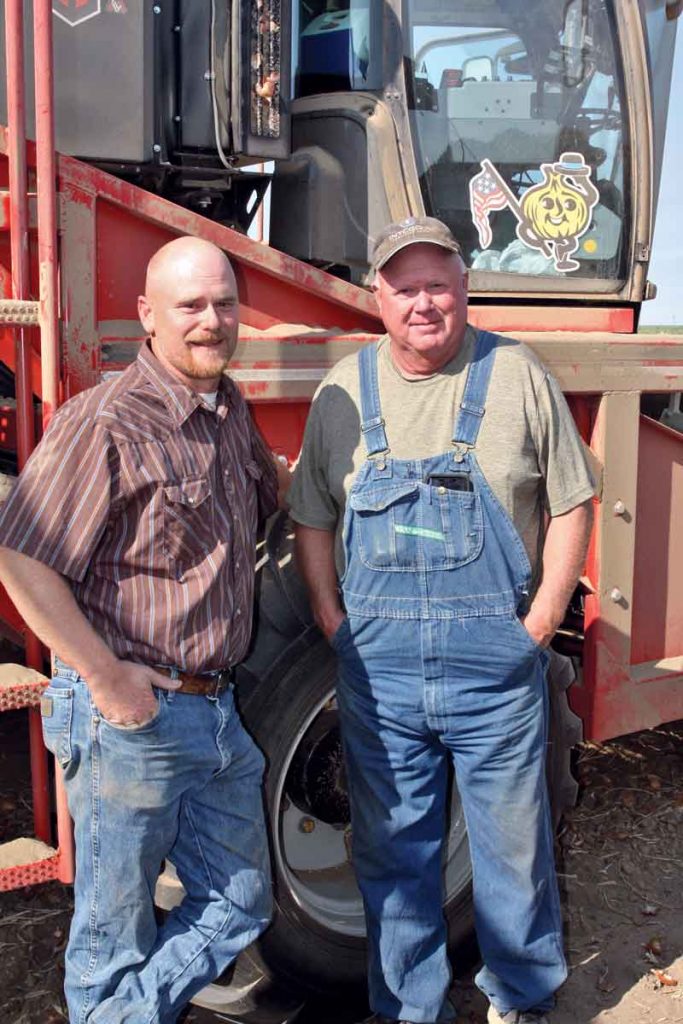
In the Market
With Jensen managing the crop from planting through packing, Chris White, Flavorful Brands’ vice president of agricultural operations and a partner in the company, tackles the challenges that come with supplying the onions to meet the marketing demands created by Flavorful Brands.
The team at Flavorful Brands is tasked with capturing consumers who don’t like typical onions and enticing them to try this new tearless, non-pungent alternative. A website, social media, digital ads, and in-store displays and signage are all being utilized to build consumer awareness.
So far, consumer response has been very positive with customers saying the product delivers on the brand promise. White has been pleased to see strong interest at the retail level despite the COVID-19 pandemic. In fact, with more people cooking at home, retail sales have been up. For White and Ennis, it’s exciting to give consumers a new option at this time.
“It’s fun to change and do something different with onions. Onions have been the same for 40 years. There are new varieties, but there’s been nothing like this,” Ennis says.
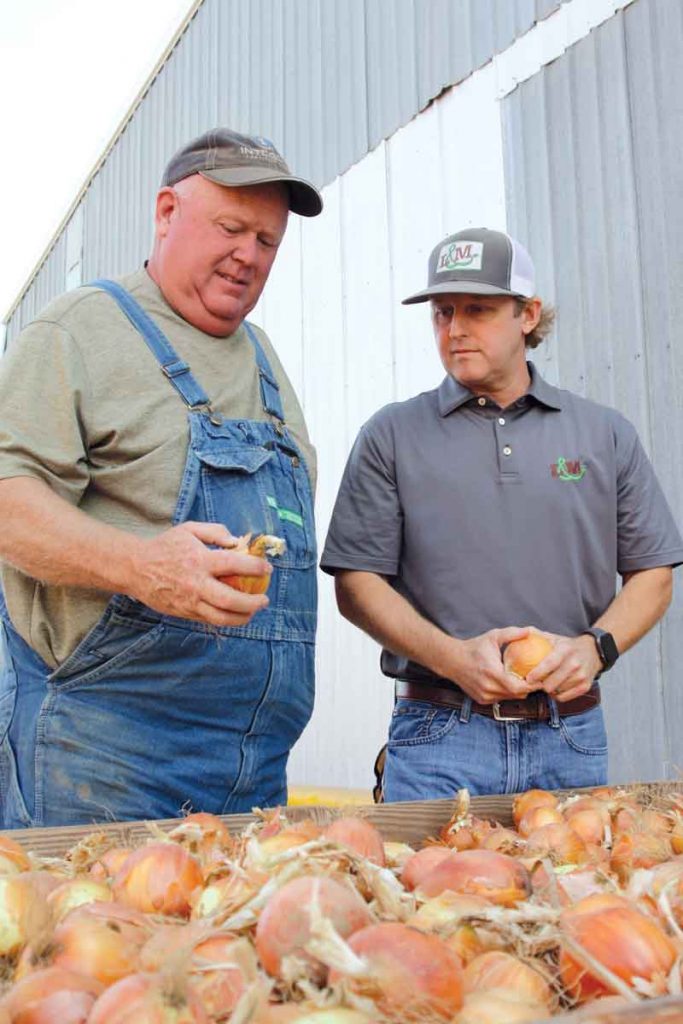
“New varieties, but mostly bred for grower attributes and not as much for the flavor profile,” White adds. “There hasn’t been much evolution in the onion industry. It’s just reds, whites and yellows. So it’s cool to bring something new.”
L&M sold its first round of Goldies during a Memorial Day test period in Safeway stores in the Pacific Northwest and is now selling at retailers throughout the U.S. including Hy-Vee in the Midwest, and Winn-Dixie, BI-LO and Harvey’s in the Southeast. Goldies should be available in stores through late April or early May.
“If the onion sells the way we’re anticipating it to, we pretty much have this season’s crop allocated,” Ennis says. “This year will tell a lot about how the onion resonates with consumers and how the brand catches hold and grows.”
Looking ahead, Ennis anticipates increasing production sixfold to eightfold in the next few years and would like to eventually have a year-round marketing program for Goldies.
